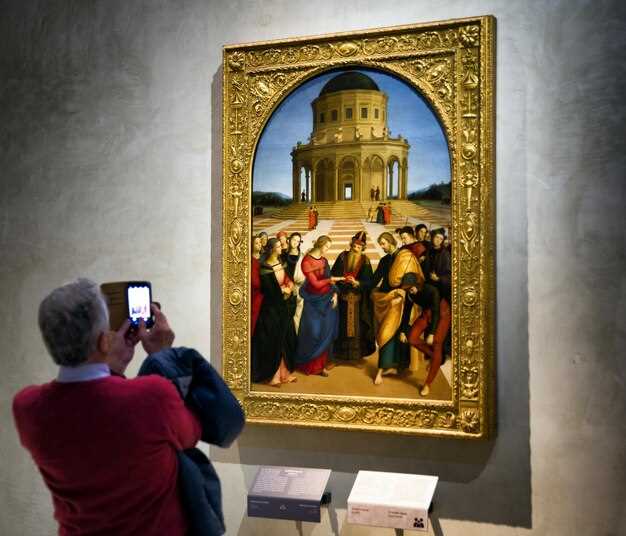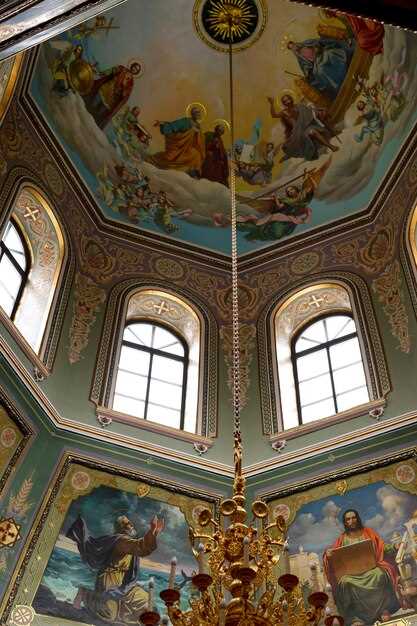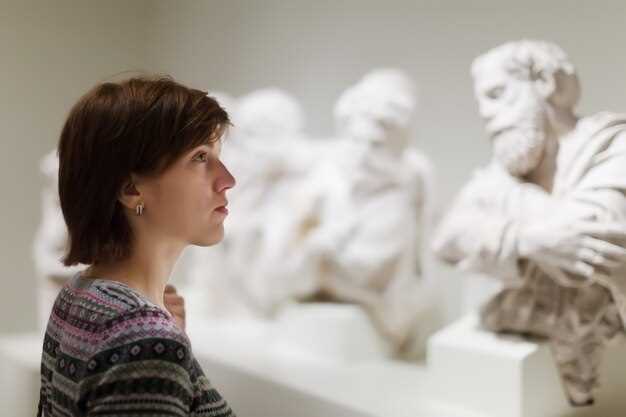
Start with a practical plan: focus on the first two rooms where scipione’s collection is exhibited, then move to the intimate painting gallery. This home to world-famous sculpture and painting rewards patient looking, not rushed tours. The halls are surrounded by light, and the adjacent Borghese gardens invite a calm preface to what you will see. Guides stand by to tailor a route for cardinals and connoisseurs alike. From centuries of patronage to modern curatorship, the experience unfolds with clarity and purpose, and it truly invites comparisons with other museums.
Highlight 1: Bernini’s David leaps from the marble with a vitality that feels almost new. The twisting posture catches the moment before the fight, and the work is displayed in a hall that amplifies its motion. You’ll notice that the texture, the gaze, and the tension invite a close study–perfect for connoisseurs who want to see how baroque mastery translates into physical presence. The piece is world-famous and worth a longer look, especially when you consider how it sits in dialogue with other sculptures in the same room. Its gaze catches the light from side windows.
Highlight 2: Paolina Borghese as Venus Victrix by Canova elevates the gallery’s neoclassical voice. The venus figure emerges from the marble as if released from a dream, while the surrounding lighting softens the lines and highlights the sitter’s pose. This world-famous portrait is popular with guides and visitors who crave a clear, visceral sense of form, and it offers another point of comparison for connoisseurs.
Highlight 3: Caravaggio’s luminous canvases anchor the collection’s dramatic core. A tightly composed scene with deep chiaroscuro demonstrates how a single figure can create a theater within a frame. The painting is exhibited beside others from the same era, inviting comparisons for older patrons who know how lighting shifts mood, pardon the interruption of time, this painting rewards extended looking. Expect a strong, direct stare from the figures, and a sense that every brushstroke has a purpose.
Highlight 4: Bernini’s Apollo and Daphne captures motion frozen in stone, with leaves and texture that seem to tremble in your sightline. The sculpture’s narrative is clear at a glance, yet a closer examination reveals the technician’s discipline: the way forms morph, the tension in the torsos, and the precise weathering of marble. The work makes a decisive statement about the baroque in a space that invites quiet reflection and discussion among visitors.
Highlight 5: the architecture, setting, and the museum experience place the objects in a rhythm that invites conversation with guides and fellow guests. The home itself–set within the world-famous Borghese villa–surrounds you with rooms that display related subjects in clusters, making it easy to compare myth, history, and portraiture. For those with limited time, ask for an abbreviated route that still covers the key works from scipione Borghese’s early collection to the modern displays. A quick break in the little courtyard cafe gives you time to ponder what you’ve seen before returning to the next room. If you notice a cupid motif in a relief or sculpture, it’s a reminder that beauty shows in small details too.
Focused guide for discerning patrons exploring Rubens in Borghese

Begin at the entrance of the Rubens rooms and focus on the five paintings that greet you; take a photo from the right-hand side, then approach each work to study brushwork and color.
Secure tickets ahead; choose a time with lighter crowds; street access can be busy, but the interior calm eventually helps you notice finer details and catch the painter’s technique in the round.
Read the wall texts for details on subjects, provenance, and dating; note unknown or debated attributions, and pay attention to catalog notes that may mention a letter or a term like vincis as part of archival references.
Observe composition: Rubens builds momentum through strong figures and tactile fabrics; some scenes feature apollos or Apollo-like figures, while the backdrop includes older trees and a luminous landscape; a bowl or vessel often anchors the focal point, guiding the eye across the canvas and reinforcing the renowned display of skill.
Engage with the labels and staff notes about provenance and working condition; the unknown works invite closer inspection for underdrawings or later interventions, and a brief conversation can clarify which pieces align with your desires and which introduces new questions for discussion.
Conclude with a quick second pass on your favorites, comparing light and texture as you move down the room’s rhythm; keep voices down and respect the gradual sightlines, then plan a short revisit to confirm impressions and solidify your will to own the details you value in Rubens’ Borghese presence.
Locate Rubens works: room-by-room map and artwork list
Begin in Room 3 to locate Rubens works first; take the printed map from the basket at the entrance and review the online guide upon this visit. This helps you stay focused, and it ensures you received clear directions without backtracking.
Room 3 showcases two Rubens works: a portrait and a large allegory; the display is built around dramatic composition, includes subject notes and date, and the golden ceiling above is befitting the tone.
Room 5 holds smaller studies and preparatory drawings; the image labels show provenance and medium, and the displays are clearly separated from neighboring walls.
Room 7 presents a pair of large canvases along the main wall; along this aisle you can compare the Rubens works with nearby Roman sculptures, noting how color and light fall across the subjects.
Room 9 holds a dynamic mythic scene; the label links the work to micheangelos influences, notes on attribution and subject, and points to an unknown provenance that staff can clarify.
Visiting tips: arrive with companions, read each label, and use the online checklist to mark what you wanted; when you tour with tours, plan a short stop for gallery-hopping and photography, while respecting displays and not touching anything.
Optimal viewing times and private-access options for elite visitors

Begin with a private, pre-opening session or an after-hours visit to secure quiet rooms and intimate access to masterpieces. Online booking is essential; reserve a 90-minute slot four to six weeks in advance to ensure your elite group avoids crowds. Private-access options include curator-led tours and private room reservations that let you focus on raffaello’s image, numerous portraits, and mosaics, all lit by allegri lighting that enhances handsome sculptures.
Optimal times emphasize the first half of the day and the final hours before closing. Because light shifts, target morning or late-afternoon sessions. The gallery’s architecture features curves in the palace, and the size of major works becomes clearer as illumination changes. Look closely at the eye-level details, while arrows on the floor guide you along preferred sightlines to compare image and sculpture without rushing, even when visits elsewhere swell.
Private-access options for elite visitors include private guides, private entry to select rooms, and exclusive, limited-capacity visits that let you linger with a handful of works. These arrangements carry you through spaces tied to the palace’s past, from caracalla-inspired halls to rooms associated with the pope and Romans, while you examine mosaics and large paintings known for their human presence. For difficult compositions, the guide can pause at exact details to ensure you grasp nuance.
To maximize value, plan around your preferred artists: request focused looks at raffaello and other painters, then compare with image-rich canvases across the galleries. After the visits, review notes online and share impressions; this transforming experience often becomes a benchmark for discerning taste.
For 18-25-year-old connoisseurs, private sessions can be tailored to introduce key themes–portraits, allegri light, and the transforming architecture–without sacrificing pace. If you travel with a group, the team can set a concise route that covers the main sculpture clusters and admired works, while still letting you step back to enjoy the palace’s human scale.
Identify signature Rubens elements: composition, color palette, and brushwork
Focus on three elements–composition, color palette, and brushwork–to identify Rubens’s signature style in the Borghese context.
-
Composition and structure
- Dynamic arrangement drives motion across the scene; Rubens models a pyramidal plan with diagonals that propel the eye toward the central figure.
- A small ‘viii’ motif appears as a decorative touch in drapery, linking to classical plans.
- Nymphs and animals appear as decorative accents that keep the rhythm without interrupting hierarchy.
- The pose of principal figures echoes classical models–David and Raphael studies–while Urbino’s sculptural clarity and Bernini’s energy shape the rhythm, prompting a question about space and movement.
- Light and shadow sculpt volume, guiding the gaze toward the ceiling and floor and creating depth that notice and soon readers can appreciate.
- Viewed in a photo study, the motion and plan become legible in close detail.
- The last gesture anchors the composition; the plan seems transforming as the viewer shifts angle, inviting time to slow.
-
Color palette
- Rubens favors a saturated palette of warm flesh tones, deep reds, and azure shadows; the colors stay harmonious across figures, fabrics, and landscape cues.
- Glazes build a smooth surface, with light interacting through layered transitions that give mosaics of glow on skin and cloth.
- Contrasts between warm tones and cool shadows deepen space and keep form readable in a Borghese hall; the palette supports the motion of the scene.
- Earthy yellows and browns anchor the composition, while touches of ultramarine and emerald lift the central drama.
- The color plan reinforces composition, and soon the viewer notices how hue shifts emphasize key gestures and the path of motion.
-
Brushwork and technique
- Brushwork is confident and smooth; short, crisp hits define limbs, drapery, and foliage, producing a tactile texture reminiscent of mosaics.
- Layered glazes model volume; highlights skim the edges with a soft, luminous edge that preserves form without harsh hits.
- Edges sharpen where necessary to ensure focal points remain legible, while atmosphere remains expansive; the plan for light and shadow stays coherent.
- Without reservation, Rubens’ brushwork delivers energy and pathos, with a lively surface that stays readable when viewed from a distance or up close.
- Cross-influences from Urbino to Bernini appear in the painterly cadence; the rhythm of the brushwork mirrors the sculptural poise and dynamic movement in the figures.
Understand commissions and provenance within Borghese collections
Ask for provenance files and commission notes for the works you plan to study. These records trace each item from the original commission through subsequent owners, revealing a long, famous lineage that shapes how you feel about the piece within the Borghese story. youll see dates, buyers, and studio marks, plus notes on whether the item entered the collection after a fall in fortune or through strategic gifts, helping you assess market worth and historical context, including details about patronage and taste.
Cross-check the items with the gallery’s thematic layout; the Borghese collection groups pieces into rooms so a commission often reflects a specific program or patron, not a random acquisition. A cross-reference between the commission notes and the room entrances reveals why a jupiter statue opens a sequence or why venus stands near aphrodite representations. This helps you understand intent behind the public display and the items’ meaning.
Provenance is a live record, not a static label. In many cases, a work arrived via the villa’s network of transfers, gifts, or bequests that tie to important events–born into an influential circle, dead or alive–and reshaped across seasons of collecting. Check for notes on baths, or irrigation and water features that accompanied the piece when it was installed; such details reveal how the object moved within the collection as the villa grew. The explanation of those moves helps you read the collection as a whole rather than as isolated items, and over time it becomes a guiding thread for curators and scholars alike.
When you study provenance, focus on ready sources: official inventories, correspondence from curators, and published catalogues. Look for the public trail: what items crossed from private collection into gallerys, how valuations changed, and which pieces remained in Borghese hands for generations. This approach yields concrete data you can share with peers and guides your next visit.
Finally, plan your route to maximize understanding: track the cross-references, take notes on the contrasting marks, and expect the Borghese story is transforming as new documents emerge. By following commissions and provenance, youll see how a single statue like jupiter or a painting of venus becomes a hinge for a broader narrative, and how the gallerys holdings steadily grow, ready to engage visitors as soon as you walk through the doors of the villa and its public facing spaces.
Conservation context: display conditions, lighting, and restoration notes
Set indirect, UV-filtered lighting with surface levels at 120–150 lux for paintings and 50–80 lux for delicate works; avoid beams striking directly on artworks and limit high-intensity bursts to protect pigments and papers. Maintain a stable climate at 18–22°C and 45–50% relative humidity, with seasonal fluctuations kept within ±5%. Keep the diffusion even to prevent hotspots of light.
The collection is housed in a palace within the Villa Borghese gardens, and entrances along the colonnade guide natural light without glare on the artworks. Use blinds or screens to keep sunlight from striking fragile surfaces, and position cases to minimize reflections on glass.
Restoration notes emphasize reversibility and thorough documentation. Conservators record background details for each work, including previous cleanings, materials, and any artistic interventions. An explanation describes why a treatment choice is believable and compatible with the original finish and patina.
For nude studies and sculptural fragments, apply lower light levels and use protective cases or barriers when displayed along visitor routes. Tours should be scheduled to limit crowding near these pieces, and you can study them yourself from a safe distance, maybe with a guide explaining the context.
Background context: some pieces recall mythic scenes like Aeneas and other romans; lighting must render their background details clearly, without flattening textures. When fixtures sit near a chapel or tomb display, keep levels modest to avoid profane glare and preserve beauty as perceived by the viewer.
Calibration and management focus on the palatine axis and the garden setting. Light meters adjust for seasonal daylight shifts along the entrances; the aim remains to keep the experience believable, protect the materials, and ensure a viewer can become immersed without distraction. This approach makes the Borghese collection worth beholding in this world, where tours, beauty, and history converge for a refined audience.
